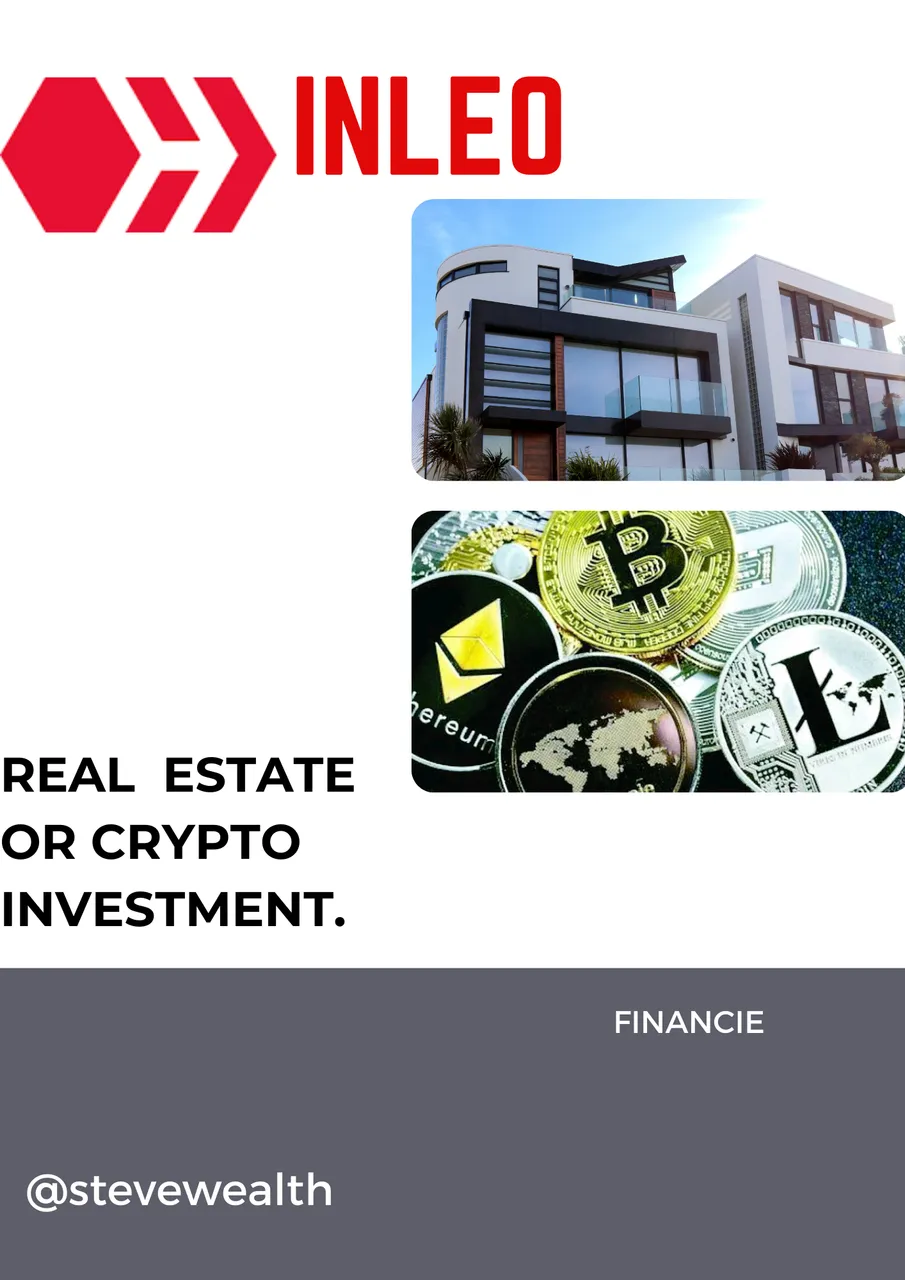Good day fellow Hiveans ✨ I hope you're having a wonderful day, and keeping updated with the wonderful events going on in INLEO.
On today's episode of money talks with Stevewealth I'll be talking about real estates assets and virtual assets, which is more important and why.

In the ever-evolving world of investments, two distinct categories have gained prominence over the past decade – real estate assets and virtual assets. Each offers unique advantages and risks, catering to different investor preferences and risk appetites. This post aims to compare these two asset classes, shedding light on their key features, potential for growth, and the risks associated with them, with a focus on the evolving dynamics between them.
Real Estate Assets:
Real estate has long been a traditional investment choice. It encompasses tangible, physical properties such as residential homes, commercial buildings, and land. The appeal of real estate lies in its stability, potential for rental income, and the tangibility of the asset.
Tangibility and Stability: Real estate offers a physical, tangible asset that can provide a sense of security. Unlike virtual assets, it is a real, brick-and-mortar investment that can be seen and touched. Real estate markets are generally more stable and less prone to sudden price fluctuations, making them a safer choice for conservative investors.
Rental Income: One of the primary advantages of real estate is the potential for rental income. Owning a residential or commercial property can generate a steady stream of cash flow through rent payments. This can provide a reliable source of income for investors.
Long-Term Growth: Real estate often appreciates in value over time, especially in desirable locations. This long-term growth potential can be attractive for investors looking to build wealth over many years.
Virtual Assets:
Virtual assets, also known as digital assets or cryptocurrencies, are a relatively new entrant to the investment world. Bitcoin, Ethereum, and various altcoins have gained immense popularity in recent years. They are intangible, decentralized digital assets that exist solely in the digital realm.
High Volatility: Virtual assets are known for their extreme price volatility. While they offer the potential for substantial gains, they also come with a high level of risk. The value of cryptocurrencies can fluctuate significantly in a short period, leading to substantial gains or losses.
Decentralization and Accessibility: Virtual assets are decentralized, operating on blockchain technology. This means they are not controlled by any central authority, such as a government or a bank. They are accessible to anyone with an internet connection, providing financial inclusivity and a level of privacy not typically associated with traditional financial systems.
Speculative Nature: Many investors see virtual assets as speculative investments. They are often driven by sentiment, news, and market trends, making it challenging to predict their price movements. The lack of regulation and oversight also adds to the speculative nature of virtual assets.
My personal advice based on previous observations.
Liquidity:
Real estate assets are not liquid, meaning they cannot be easily converted into cash. Selling a property can take time, and the process can be complex. In contrast, virtual assets are highly liquid, as they can be bought and sold 24/7 on various cryptocurrency exchanges.
Risk and Return:
Real estate offers a more stable, conservative investment with a potential for long-term growth and rental income. Virtual assets can yield significant returns but come with higher risk due to their volatility.
Diversification:
Investors often diversify their portfolios to spread risk. Real estate and virtual assets can serve as diversification tools, with their unique characteristics providing a hedge against each other's weaknesses.
Regulation:
Real estate investments are typically subject to a range of regulations and property laws. Virtual assets operate in a less regulated environment, which can be both an advantage and a risk, as regulatory changes can impact their value.
Market Accessibility:
Virtual assets are more accessible to a global audience, making them attractive for international investors. Real estate investments are often location-specific and require physical presence for management.
The choice between real estate assets and virtual assets depends on individual investor preferences, risk tolerance, and financial goals. Real estate provides stability, tangibility, and potential for rental income, while virtual assets offer high liquidity, decentralization, and the potential for substantial gains.
I think it's better to have a diversified portfolio that includes both asset classes, taking advantage of the strengths of each while mitigating their respective weaknesses. As the investment landscape continues to evolve, a careful and balanced approach is key to building and preserving wealth.
I hope you had a good time reading.